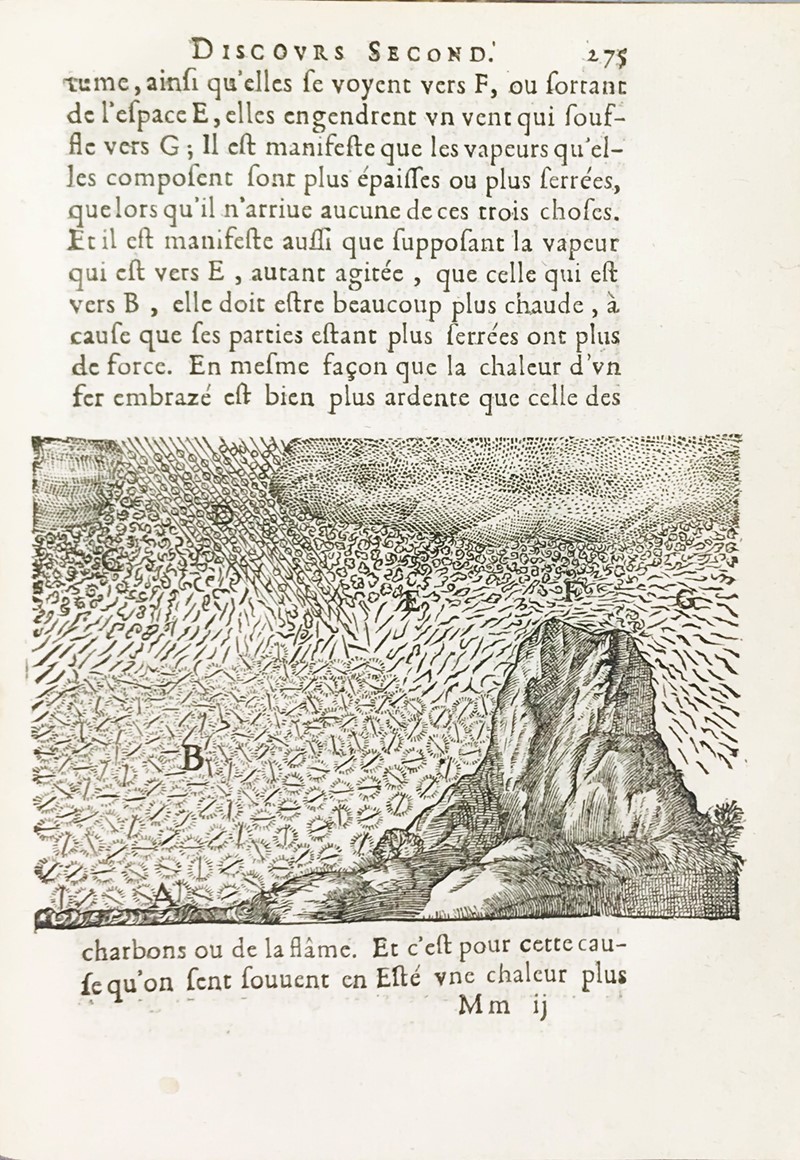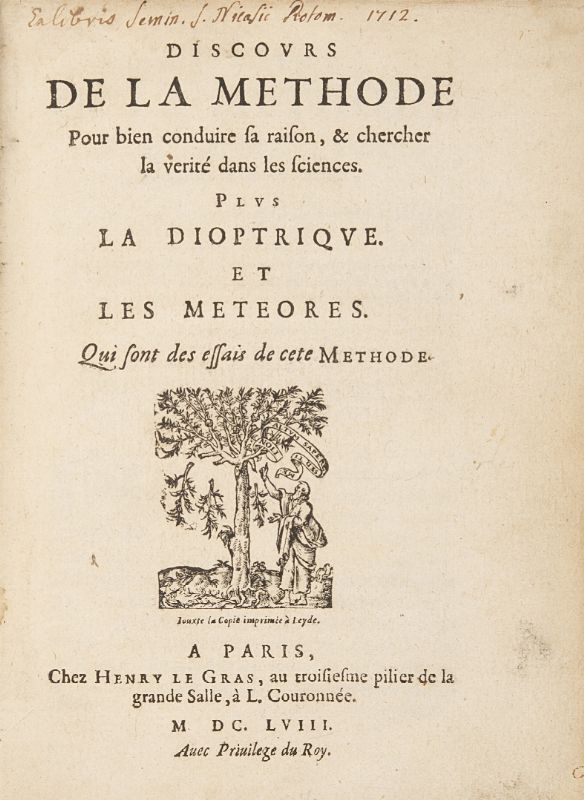DESCARTES, René (1596-1650). Discours de la methode pour bien conduire sa raison, & chercher la verité dans les sciences. Plus La Dioptrique. Les meteores. Et la geometrie. Qui sont des essais de cete Methode . Leiden: Jan Maire, 1637. First edition of Descartes’ first published work, the opening essay containing one of the fundamental statements of modern philosophy and science: ‘I think, therefore I am’ (p. 33). In the first part Descartes sets out his method of inquiry, and then illustrates it in three essays on particular sciences. 'Descartes's purpose is to find the simple indestructible proposition which gives to the universe and thought their order and system. Three points are made: the truth of thought, when thought is true to itself (thus, cogito, ergo sum), the inevitable elevation of its partial state in our finite consciousness to its full state in the infinite existence of God, and the ultimate reduction of the material universe to extension and local movement' (PMM). Descartes's discussion of Harvey's discovery of the circulation of blood was the first mention made of it by a prominent foreign scholar. Dibner, Heralds of Science , 81; Grolier/Horblit 24; Guibert, Bib. Descartes , 1; Norman 621; NLM/Krivatsky 3114; PMM 129; Tchemerzine IV, 286. Quarto (190 x 142mm), pp. 78, [2], 294: bound without the Geometrie section at the end (woodcut printer's device on title, numerous text illustrations and diagrams (occasional light browning, the odd spot). Late 18th-century boards covered in marbled papers, flat spine with gilt lettering-piece and ink lettering (edges worn, cover to corners and spine partly perished); preserved in a custom-made box. Provenance: late 18th-century French owner (inscription on front flyleaf).
DESCARTES, René (1596-1650). Discours de la methode pour bien conduire sa raison, & chercher la verité dans les sciences. Plus La Dioptrique. Les meteores. Et la geometrie. Qui sont des essais de cete Methode . Leiden: Jan Maire, 1637. First edition of Descartes’ first published work, the opening essay containing one of the fundamental statements of modern philosophy and science: ‘I think, therefore I am’ (p. 33). In the first part Descartes sets out his method of inquiry, and then illustrates it in three essays on particular sciences. 'Descartes's purpose is to find the simple indestructible proposition which gives to the universe and thought their order and system. Three points are made: the truth of thought, when thought is true to itself (thus, cogito, ergo sum), the inevitable elevation of its partial state in our finite consciousness to its full state in the infinite existence of God, and the ultimate reduction of the material universe to extension and local movement' (PMM). Descartes's discussion of Harvey's discovery of the circulation of blood was the first mention made of it by a prominent foreign scholar. Dibner, Heralds of Science , 81; Grolier/Horblit 24; Guibert, Bib. Descartes , 1; Norman 621; NLM/Krivatsky 3114; PMM 129; Tchemerzine IV, 286. Quarto (190 x 142mm), pp. 78, [2], 294: bound without the Geometrie section at the end (woodcut printer's device on title, numerous text illustrations and diagrams (occasional light browning, the odd spot). Late 18th-century boards covered in marbled papers, flat spine with gilt lettering-piece and ink lettering (edges worn, cover to corners and spine partly perished); preserved in a custom-made box. Provenance: late 18th-century French owner (inscription on front flyleaf).














Testen Sie LotSearch und seine Premium-Features 7 Tage - ohne Kosten!
Lassen Sie sich automatisch über neue Objekte in kommenden Auktionen benachrichtigen.
Suchauftrag anlegen